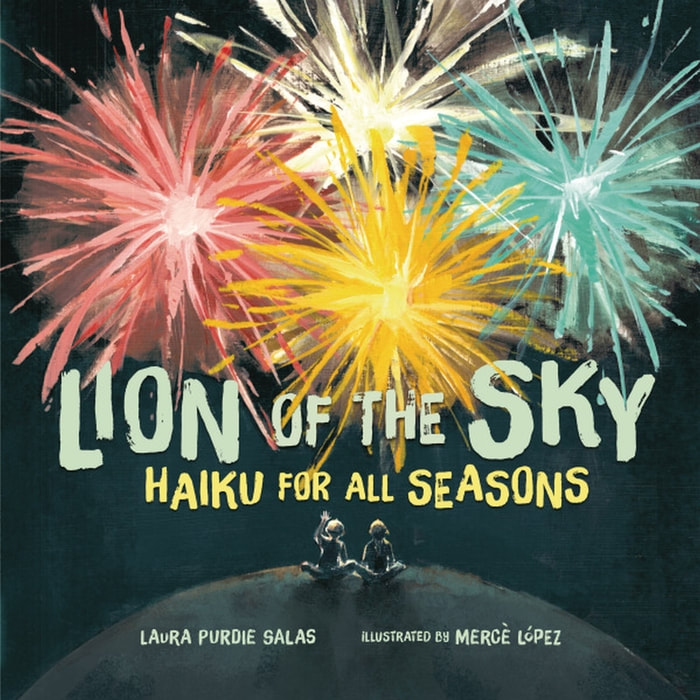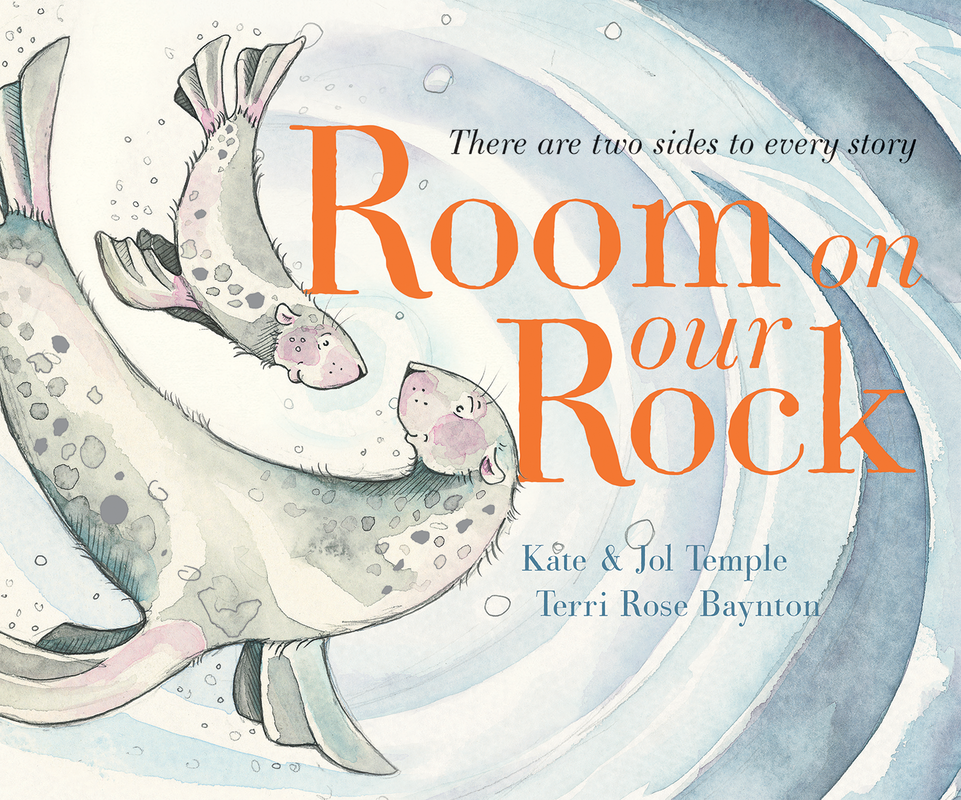It’s a Slam Dunk! Aiming High with Jen Bryant’s Above the Rim: How Elgin Baylor Changed Basketball5/11/2021
By Donna Sabis-Burns and Amina Chaudhri, on behalf of The Biography Clearinghouse
Please visit The Biography Clearinghouse for an interview with Jen Bryant and a range of critical teaching and learning experiences to use with Above the Rim. Highlighted here are a few teaching ideas inspired by Above the Rim. The full book entry is available at the Biography Clearinghouse. Literary and Figurative Language Jen Bryant wrote Above the Rim in prose verse - a form of writing that does not use a rhyme scheme or rhythm but is formatted to look distinctive on the page, and makes use of word and line spacing to create an effect. The reader must carefully follow the punctuation in order to read prose verse fluently rather than pausing at the end of each line. This form also allows the writer to isolate particular sentences, placing them on lines of their own, which can serve to call attention to them. Bryant does a beautiful job in capturing the rich emotion of Elgin Baylor through careful word choice and line spacing.
Analyzing Character In her interview, Jen Bryant frames her work as a writer with a quote from the poet, Nikki Giovanni: "Writers don't write from experience, they write from empathy." She adds that she hopes her readers will empathize with Elgin Baylor and understand him in the context of his environment. Above the Rim characterizes Elgin as persistent, humble, brave, and more and as such, can be used to teach about character traits using text evidence.
Donna Sabis-Burns, Ph.D., an enrolled citizen of the Upper Mohawk-Turtle Clan, is a Group Leader in the Office of Indian Education at the U.S. Department of Education* in Washington, D.C. She is a Board Member (2020-2022) with the Children's Literature Assembly, Co-Chair of the 2021 CLA Breakfast meeting (NCTE), and Co-Chair of the Diversity, Equity and Inclusivity Committee at CLA.
Amina Chaudhri is an associate professor at Northeastern Illinois University in Chicago, where she teaches courses in children's literature, literacy, and social studies. She is a reviewer for Booklist and a former committee member of NCTE's Orbis Pictus Award for Outstanding Nonfiction for Children. *The views expressed herein do not necessarily represent the positions or policies of the U.S. Department of Education. No official endorsement by the U.S. Department of Education of any product, commodity, service, or enterprise mentioned herein is intended or should be inferred. BY JENNIFER M. GRAFF & JOYCE BALCOS BUTLER, ON BEHALF OF THE BIOGRAPHY CLEARINGHOUSE Our current celebration of poetry as a powerful cultural artifact and the national dialogue about voting rights generated by the introduction of 300+ legislative voting-restriction and 800+ voting-expansion bills in 47 states have inspired a rereading of the evocative, award-winning picturebook biography, Voice of Freedom: Fannie Lou Hamer, Spirit of the Civil Rights Movement. Written by Carole Boston Weatherford, illustrated by Ekua Holmes, and published by Candlewick Press in 2015, Voice of Freedom offers a vivid portrait of the life and legacy of civil rights activist, Fannie Lou Hamer. Her famous statement, “All my life I’ve been sick and tired. Now I’m sick and tired of being sick and tired” (p.18) serves as a testimonial to the psychological and physiological effects of the injustices and violence inflicted upon Hamer and other Black community members in Mississippi. Additionally, Hamer’s statement signifies her tenacity, conviction, and unwavering fight for voting rights, congressional representation, and other critical components of racial equality until her death in 1977.
Below we feature one of two time-gradated teaching recommendations included in the Create section of the Voice of Freedom book entry. Youth As Agents of Change in Local CommunitiesWeatherford begins Voice of Freedom with Hamer’s own words: “The truest thing that we have in this country at this time is little children . . . . If they think you’ve made a mistake, kids speak out.” Pairing Hamer’s advocacy detailed in Voice of Freedom with contemporary youth activists, guide students in their exploration of how they can (or continue to) be agents of change in their communities.
To see more classroom possibilities and helpful resources connected to Voice of Freedom: Fannie Lou Hamer, Spirit of the Civil Rights Movement, visit the Book Entry at The Biography Clearinghouse. Additionally, we’d love to hear how the interview and these ideas inspired you. Email us at thebiographyclearinghouse@gmail.com with your connections, creations, and questions. Jennifer M. Graff is an Associate Professor in the Department of Language and Literacy Education at the University of Georgia where her scholarship focuses on diverse children’s literature and early childhood literacy practices. She is a former committee member of NCTE’s Orbis Pictus Award for Outstanding Nonfiction K-8, and has served in multiple leadership roles throughout her 15+ year CLA membership. Joyce Balcos Butler is a fifth-grade teacher in Winder, Georgia, where she focuses on implementing social justice learning through content areas. She is a National Writing Project Teacher Consultant, a Red Clay Writing Fellow at the University of Georgia, and a member of CLA. BY ELIZABETH M. BEMISSEach year, the Notable Children’s Books in Language Arts Committee (NCBLA) reads and discusses works of fiction, non-fiction, and poetry written for K-8 readers. Committee members, seven dedicated children’s literature enthusiasts, with experience ranging from elementary school teaching, to school librarians, and finally, university faculty with expertise in children’s and young adult literature, consider the requisite qualities for narrowing down the winners to a list of 30 titles. In this post, I will feature two poetic picture books included in the 2020 Notables list, Lion of the Sky: Haiku for All Seasons (2019), and Room on Our Rock (2019).
Teaching Tips for Using the Books as Mentor TextsUtilized as mentor texts, these poetic picture books provide readers with delightful opportunities to craft their own written responses inspired from the texts. The whimsical collection of “riddle-ku” poems in Lion of the Sky invites readers to enjoy a play on language and is an inspiring way to help young writers craft unique poetry of their own. Students can create their own “riddle-ku” poems and invite peers and family members to guess the answer to their “riddle-kus.” To scaffold young writers, teachers can draw from this brainstorming resource from Millbrook Press where students can craft a “Zoo-ku,” or a “riddle-ku” about an animal. Additionally, students can publish their “riddle-ku” on a Padlet Page created by the author, Laura Purdie Salas. Another way students can craft their poems is through Read Write Think’s Interactive Haiku Generator, which guides students through brainstorming, drafting, and publishing, where individual background images can be added to the published “riddle-ku.” The poetic forward and backward reading of Room on Our Rock can foster rich conversations between readers about the varying messages from the book when read forward versus backward as well as discussions surrounding point of view. Teachers can guide students to reflect on the kind of tone and voice needed to read the book forward and how it changed to read the book backward. Teachers could also have students think about how the artwork on each page was used to create the tone of the book from two perspectives. After engaging in deep conversation around the book, students can partner up to write a review of the book and then share their reviews via free audio or video sharing applications. Students can post links to the reviews on a class page such as note.ly or Padlet. Elizabeth M. Bemiss, an Assistant Professor at the University of West Florida, teaches courses in children’s and young adult literature and literacy methods. Elizabeth is a member of the 2019-2021 Notables Committee. |
Authors:
|
CLA
About CLA
|
Journal of Children's Literature
Write for JCL
|
ResourcesCLA-sponsored NCTE Position Statements
|
Members-Only Content
CLA Video Library
|
© COPYRIGHT 2018.
ALL RIGHTS RESERVED |









 RSS Feed
RSS Feed